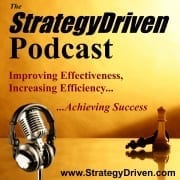Blockchain: The New Frontier In Customer Engagement

Getting organizations to change, even in the presence of compelling new technologies, is hard. When the internet came along in the mid-1990s, some major brands took ten years to begin exploiting it. And even then, their efforts were half-hearted.
We’re seeing the same phenomenon emerge today with blockchain. Everyone knows that it is a powerful technology, but employees struggle to adapt. They don’t want to do new things that could be difficult. They’d prefer to stick to the humdrum, regular mundane tasks they know.
With that said, blockchain is one of those technologies that firms can’t afford to miss. If they do, then it could mean missing out on better engagement with customers, and expanding in their industry.
Already, pioneers are exploring how to use blockchain to transform business infrastructure. Experts are looking at ways to leverage the new technology to transform how firms do business with each person. The hope is that blockchain will prove so valuable to firms that they use it for everyday transactions.
But how, exactly, could blockchain engage customers?
Smooth Peak EV Energy Demand
The electric vehicle revolution is going to be good for children’s lungs but seriously bad for the power grid. Consumer behavior means that most people charge their electric vehicles when they get home from work, between 5 pm and 7 pm. This means that there is a huge spike in demand around dinner time.
If EV usage continues to grow, existing power infrastructures won’t be able to meet demand. There will be rationing and blackouts around peak times – not what anyone wants.
However, there may be a blockchain-based solution. The idea is to reward consumers with individual tokens, called “sparks” whenever they charge their vehicles outside of peak times, such as in the middle of the night. Owners that do this could then trade their currency for real money, getting a discount on their energy bills.
Such systems are actually superior for energy grids compared to current setups. Energy consumption is notoriously low during the night, but power firms need to keep expensive energy-generation systems on continuously to prepare them for increased load in the morning. Charging EVs at night would result in far better use of energy-generating capital, lowering bills, and improving outcomes for all.
There are also virtual power plant capabilities. The idea here is to make it possible for EV owners to sell their power back to the grid in peak times when power plants need extra supply. If there’s a sudden surge in electricity usage in the morning or evening, suppliers could offer owners higher prices to sell their battery charge back to the grid, instead of relying on expensive booster plants and technologies.
Creating Currencies Around Shared Interests
We’re also witnessing the birth of another new (and somewhat strange) phenomenon that nobody could have predicted: the birth of so-called “fan tokens.” Major organizations from Formula 1 to e-sports teams are all signing up to increase enthusiast engagement globally.
For the uninitiated, fan tokens are a bit like cryptocurrencies, but offer punters a deeper level of interaction within a particular industry. Firms are exploring them fervently to see if they can use them to get consumers more interested in what they do.
As with other crypto technologies, fan tokens sit on the blockchain. However, they are not the same as Bitcoin or other currencies that use the technology. Like cryptocurrencies, they are fungible. But holding tokens provides other rewards, such as being able to vote on club decisions, access merchandise designs, and unique experiences, and earn rewards. You can think of owners as being similar to club stakeholders but without any formal rights other than those defined by the blockchain.
If you’re new to the concept, you can read tips for buying fan tokens here. This article explains what you need to do and what fan tokens are in more detail.
Ultimately, these tokens help to make fans feel more engaged in whatever organization issues the coin. Hence, if you have a business with a cult following, you could potentially use this method to give customers more say over products, services, and the direction your firm takes.
Improving The Payment Journey
Then there is the potential for firms to improve the payment journey. Current payment systems can make some customers feel disengaged, particularly those looking to make purchases from overseas. Customers can find it hard to access traditional banking facilities.
With cryptocurrency transactions on the blockchain, these sorts of barriers become a thing of the past. Merchants and individual consumers can transact with each other trustlessly, without the need for an intermediary, such as a bank. Companies and clients can liaise with ease and set whatever payment terms they like. There are virtually no limits on what they can do.
Perhaps even more promisingly, customers don’t even need to have a bank of their own. The network functions as security for all parties. Therefore, firms can sell to customers who are outside of the formal economy.
There are some crazy applications of app-enabled crypto payments, too. For instance, customers can use apps to trade with each other to get faster services.
Take a busy food court, for instance. In a traditional setup without blockchain, all customers have to wait their turn, regardless of how hungry they are or how much of a rush they are in. There is no simple way to pay other customers to jump the line.
But with blockchain, that’s no longer the case. The technology makes it easy to carry out complex transactions like this so that pricing mechanisms can more closely match each individual’s needs. Even if they seem gimmicky, such systems are likely to engage customers interested in trialing them.












Leave a Reply
Want to join the discussion?Feel free to contribute!